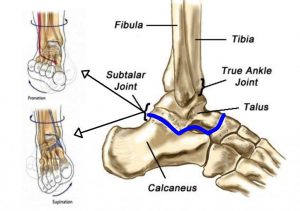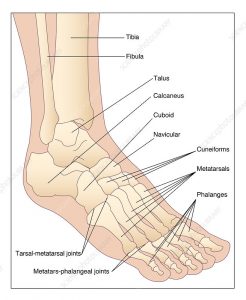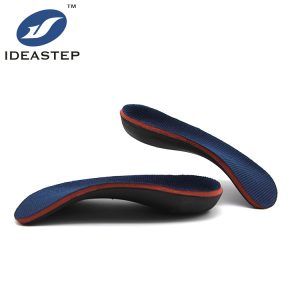Orthotic insoles for Foot health problems.
Recently, many friends have had questions about foot health problems and the use of functional orthotic insoles.
As a supplier of orthotic insoles specializing in foot health, I think this is a comprehensive knowledge that combines human anatomy, human biomechanics, and human body compensatory function compensation, and requires systematic and professional explanation.
We all know that the human foot is composed of 26 bones and 2 sesamoid bones (located below the first metatarsophalangeal joint). All bones work in concert to maintain the support and stability of the upper structure.

If the foundation is unstable, then the entire structure will be affected, and soft tissues will usually try to “compensate” for the basic abnormality.
Our foot shape is triangular, divided into 3 different parts: hind foot, mid foot, and forefoot.
The hind foot consists of the calcaneus and the talus, which together form the subtalar joint.
The midfoot includes the cuneiform bones, bones, and navicular bones-they are locked together to support the weight of the entire body during mid-stance and when the center of gravity falls in this area.
Finally, the forefoot is composed of the phalanges and metatarsal bones (metatarsal body).
In the process of standing and walking, the weight is distributed between the calcaneus to the metatarsal body and joints.
The human body puts all weight on a load-bearing position on the boat, cuneiform and cuboid bones, and these three become the cornerstone of the supporting structure.
Among the common foot problems, whether the arch of the foot is normal (flat feet, high arch feet) and whether the foot has pronation and supination is that the test standard.
Deformation of the arch of the foot can cause a series of foot problems, like plantar fasciitis/heel spurs. Most of the arch collapses and pronation results in elongation of the fascia and tears from the calcaneus. The bone spurs are secondary compensation.

For example, foot tendinitis is mostly caused by pronation and supination, the medial and lateral attachment points of the Achilles tendon are repeatedly stretched excessively, resulting in a painful stress point. Pronation and supination are key pathogenic factors.
Knee joint pain is usually thanks to pronation and supination factors, sprained collateral ligament.
Children’s heel pain is said to pronation and children’s growth spurts and features a greater impact on children who exercise quite sedentary children.
Knee joint pain is usually caused by a mixture of tibial torsion, growth spurt, and pronation.
Hip pain is thanks to the structural or functional unequal length and supination factors of both lower limbs, including tight external rotation of the hip and interference with long lower limbs.
Low back pain unilateral and bilateral pronation and structural and functional unequal length of the lower limbs, leading to poor biomechanical pressure on different parts of the waist.
In the face of those problems, if you recognize the explanation for the disease, you’ll use appropriate scientific physical restoration methods to alleviate the pain. The purpose of functional orthotic insoles to affect the causes of foot pain isn’t only to alleviate pain symptoms, but also to completely get obviate podiatry. Trouble and therefore the compensation problem of physical body mechanics caused by it.
At present, most of the best physical rehabilitation methods for foot problems all over the world are to measure the patient’s plantar pressure (foot pressure distribution image/foot shape/foot surface) through an optical plantar detector and then according to the actual detection Foot data reports and requirements, combined with the comprehensive analysis and editing design of human biomechanics, tailor-made functional corrective orthotic insoles to deal with foot problems.

This technology has developed relatively early abroad, and its scope of use is relatively widespread. In recent years, this field has just been involved in China. In this regard, both doctors and rehabilitation practitioners and patients need a gradual process of learning and understanding.
However, a good scientific and technological rehabilitation method, as long as it is truly beneficial to our human health and has a good effect on our foot problems, we will all readily accept it.
Therefore, foot problems are comprehensive. You can’t treat your head and feet with a headache. The correct way to recover is to find the root cause of the disease.
For foot problems, we recommend that the plantar pressure test be performed first, and then the doctor will make a comprehensive consideration of the patient’s lower limb mechanics analysis and judgment and human body compensation, and then draw conclusions and adopt the most scientific and reasonable rehabilitation methods. This is the real effect.
